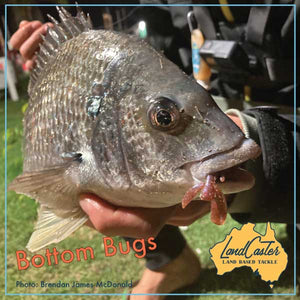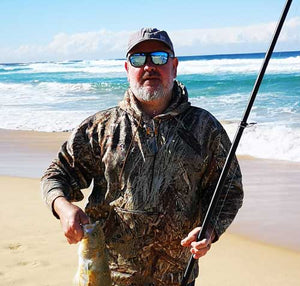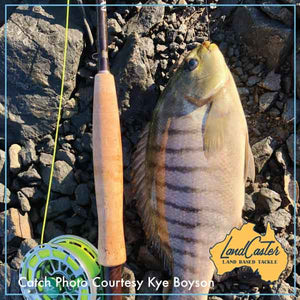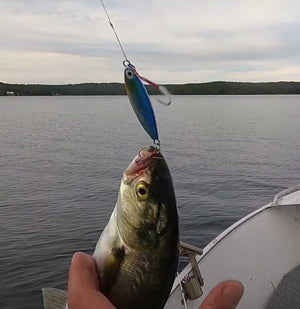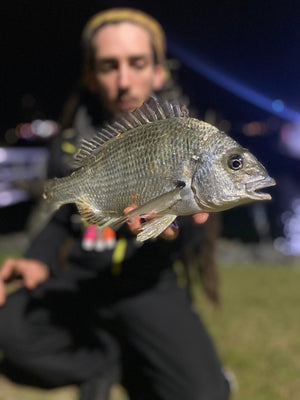Free Shipping Over $70

Winter Fishing for Australian Bass and Estuary Perch
Winter Fishing for Australian Bass and Estuary Perch: A Tale of Floods and Fins
Introduction Seasonal flooding and rainfall profoundly impact fishing, particularly in estuarine systems. As water levels rise and fall, river habitats reshape, influencing the behaviour and distribution of fish species such as Australian bass and estuary perch. Understanding these changes is crucial for anglers aiming to maximize their success during the winter fishing season.The Impact of Seasonal Rainfall Seasonal rainfall can drastically alter river systems, leading to changes in sandbars, riverbanks, and habitats. Increased freshwater flow can push resident bass and estuary perch downstream into new areas, creating opportunities for anglers to find fish in unexpected locations. These alterations in the river structure also provide new shelters and feeding grounds for baitfish, bass, and perch, enhancing the overall fishing experience.
When heavy rains fall, they can create new channels and deepen existing ones, scouring out banks and delivering tree snags that provide ideal habitats for fish. These physical changes can significantly impact fish behaviour, pushing them into different areas and making some spots that were previously unproductive turn into fishing hotspots. For example, a previously shallow stretch of river might deepen enough to support larger fish, while new snags can provide the cover bass and estuary perch need to thrive.
Early Season Fishing Conditions Optimal fishing conditions are often created by the seasonal changes brought about by rainfall. As water clarity decreases, larger lures with reflective or holographic colour patterns become more effective. Anglers should equip themselves with appropriate gear, such as flat-bottomed tinnies or kayaks, to navigate the altered river systems. Advanced technology, like sounders and electric motors, can also help locate prime fishing spots and access shallow waters.
Fishing in the early season, right after significant rainfall, can be particularly rewarding. The influx of fresh water and the reshaped river beds create dynamic environments where fish are more likely to congregate in new structures and deeper pools. Larger lures are recommended during this time, as they are more visible in murky waters and can attract the attention of predatory fish. Reflective and holographic patterns can make a big difference, catching whatever light penetrates the water and mimicking the flash of a baitfish.
Rediscovering the River Exploring new fishing spots post-rainfall is essential for success. Seasonal changes can create new habitats and alter existing ones, requiring anglers to adapt their techniques accordingly. Slow-rolling deep fat lures along rock walls and targeting bass grouping in mid-river can prove highly effective. Identifying and targeting key areas, such as newly formed snags and deep banks, can lead to successful fishing sessions.
Rediscovering the river after significant seasonal changes means re-evaluating previously known spots and venturing into new areas. Floods and heavy rainfall can create backwaters, new eddies, and deeper channels that weren't there before. Anglers should be prepared to adapt their techniques, focusing on these new formations. For example, rolling deep lures slowly along new rock walls or targeting mid-river groups of bass that have moved into deeper pools can yield excellent results. Regularly using a sounder to map out these changes can give anglers a significant advantage.
Spawning Migrations and Weather Patterns Understanding the role of brackish water in fish spawning is crucial. Brackish water, with its neutral density, provides a safe environment for newly fertilized eggs to survive until they hatch. Seasonal rainfall extends the brackish sections of rivers, influencing the timing and success of spawning migrations. Consistent winter weather patterns, characterized by longer-lasting high and low-pressure systems, create favourable conditions for targeting estuary species like bass and perch.
The brackish sections of a river, where fresh and saltwater mix, are vital spawning grounds for many estuarine species. The neutral density of brackish water ensures that fertilized eggs neither sink nor float, protecting them from predators. Seasonal rainfall can extend these brackish areas further downstream, influencing where fish will spawn and how long these areas remain viable for egg development. In regions like NSW, bass and estuary perch begin their spawning migrations in response to the first significant rains of the season, usually around May. Consistent winter weather patterns, with extended high-pressure systems, provide stable conditions that are ideal for fishing.
Broader Implications and Other Locations The benefits of seasonal rainfall extend beyond a single river system. Other southern systems, such as the Wallagaraugh River and Mallacoota, also produce excellent fishing results during the winter period. Anglers can encounter a variety of fish species, including trophy-sized estuary perch and large black bream. Using specific techniques, such as metal blades for schooling bream, can lead to highly rewarding fishing experiences.
In addition to the Bega River, many other rivers and estuarine systems in southern Australia experience similar transformations due to seasonal rainfall. The Wallagaraugh River and Mallacoota are prime examples of how these changes can enhance fishing opportunities. Trophy-sized estuary perch are consistently found in the snags along these rivers, and winter black bream congregate in large schools to spawn. Anglers using metal blades can effectively target these schooling bream, yielding impressive catches. The variety of species and the dynamic nature of these environments make winter fishing in southern Australia both challenging and rewarding.
Best Types of Lures for Winter Bass and Estuary Perch Fishing Choosing the right lures is critical for successful winter fishing. Here are some of the most effective types of lures for targeting Australian bass and estuary perch in the New South Wales region:
- Vibe Lures: As water clarity decreases during winter, ReproBaits Vibe Lures with reflective or holographic patterns become essential. These lures catch light and mimic the flash of baitfish, making them more visible and attractive to predatory fish in murky waters.
- Bottom Bugs: Soft plastic lures, especially ReproBaits Bottom Bugs, are effective for both bass and estuary perch. They can be slow-rolled along the bottom or near structures where fish are likely to hide. Their lifelike movement and versatility make them a favourite among anglers.
- Spinnersmetal Jigs: Metal blade lures like ReproBaits Spinnersmetal Jigs are particularly effective for schooling bream but can also attract bass and estuary perch. Their vibration and flash mimic small baitfish, making them irresistible to predatory fish. They are especially useful in deeper water and around structures.
- Spinners: Spinnerbaits with flashy blades and vibrant skirts can draw strikes from bass and estuary perch, especially when fished around snags and in deeper pools. ReproBaits Spinners are versatile and can be used in various water conditions.
- Billabong Bubbler: Although less common in winter, topwater lures like the Billabong Bubbler can still be effective during early morning or late afternoon when fish are more active near the surface. Their action can provoke aggressive strikes from hungry bass and estuary perch.

